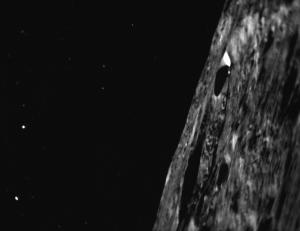Science
Faraway Moon or Faint Star? Possible Exomoon Found

Researchers have detected the first "exomoon" candidate -- a moon orbiting a planet that lies outside our solar system.
- Read more
- 425 reads
Join in the Cassini Name Game

In its next phase, NASA's Cassini spacecraft will perform 22 loops between Saturn and its innermost ring.
- Read more
- 325 reads
LADEE Project Scientist Update: Citius, propius, occupatus

An image taken by the star trackers aboard LADEE of the moon’s surface illuminated by a nearly full Earth.
- Read more
- 315 reads
Scientists Succeed in Simultaneous Determination of Acetaminophen, Codeine in Drug Samples

- Read more
- 334 reads
No compromises: JILA's short, flexible, reusable AFM probe

This image shows JILA's modified AFM probes measuring DNA molecules. The older mod (long cantilever, right) eliminated the usual gold coating to enhance long-term stability. The latest version (left) retains the gold coating where needed to reflect light but maintains excellent stability. Researchers also removed a large section to reduce stiffness and friction near surfaces. The new probe provides precise results much faster than before, while reducing "noise" (colored squiggles).
- Read more
- 316 reads
Chance Meeting Creates Celestial Diamond Ring

- Read more
- 345 reads
TMC13 Deposition Rate Controller now supports Multi-Crystal sensors

Support for multi-crystal sensors
- Read more
- 348 reads
First principles approach to creating new materials: Solid-state chemistry and theoretical physics combined to help discover new materials with useful properties

The artificial hetero-structuring of complex materials at the atomic scale
- Read more
- 347 reads
Images From NASA Mars Rover Include Bright Spots

This image from the Navigation Camera (Navcam) on NASA's Curiosity Mars rover includes a bright spot near the upper left corner.
- Read more
- 305 reads
Human Rights
Fostering a More Humane World: The 28th Eurasian Economic Summi

Conscience, Hope, and Action: Keys to Global Peace and Sustainability

Ringing FOWPAL’s Peace Bell for the World:Nobel Peace Prize Laureates’ Visions and Actions

Protecting the World’s Cultural Diversity for a Sustainable Future

Puppet Show I International Friendship Day 2020


